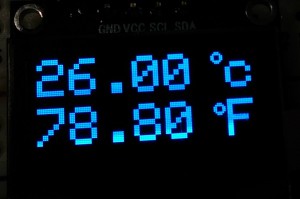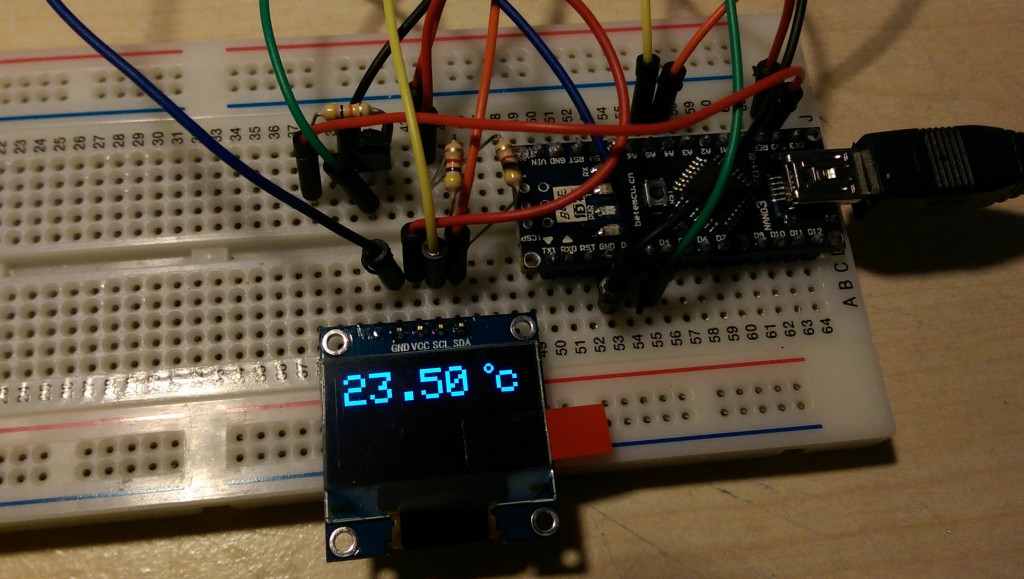Arduino and 128×64 OLED Display

I recently got myself an OLED display off eBay which is arduino compatible. I have never had an OLED screen on any device so I thought I would give one a go to see if they were worth it.
Compared to conventional LCD’s, OLED displays don’t need a backlight as each pixel is in fact a light in itself. This makes them incredibly crisp and bright, and the blacks are actually black instead of very dark grey. Unfortunately the more pixels you use the more power it uses too. You have to balance the purpose of the screen over power consumption.
A regular monochrome LCD would be best suited to battery operated items that have to run long term on one battery or where you simply don’t need to show complex data.
A colour LCD would be best suited to more complex applications where the battery doesn’t have to last long but it has to be functional.
An OLED screen is best suited to low power applications that need better visibility of the display and power consumption needs to be reasonably low.
I wasn’t aware of how small this OLED display was until I got it but I was very impressed (once I got it working!) with the quality. Handily it also uses the same syntax in the Arduino code as the Nokia LCD screen that I used on my power box project. That makes it easy to work with and makes the screens almost interchangeable too (besides resolution differences).
As it stands I had no specific plans for this display but I’m sure I’ll think of something! It’s almost small enough to make into a watch display but unfortunately I doubt I could get the rest of the circuitry small enough to make a watch out of it!

